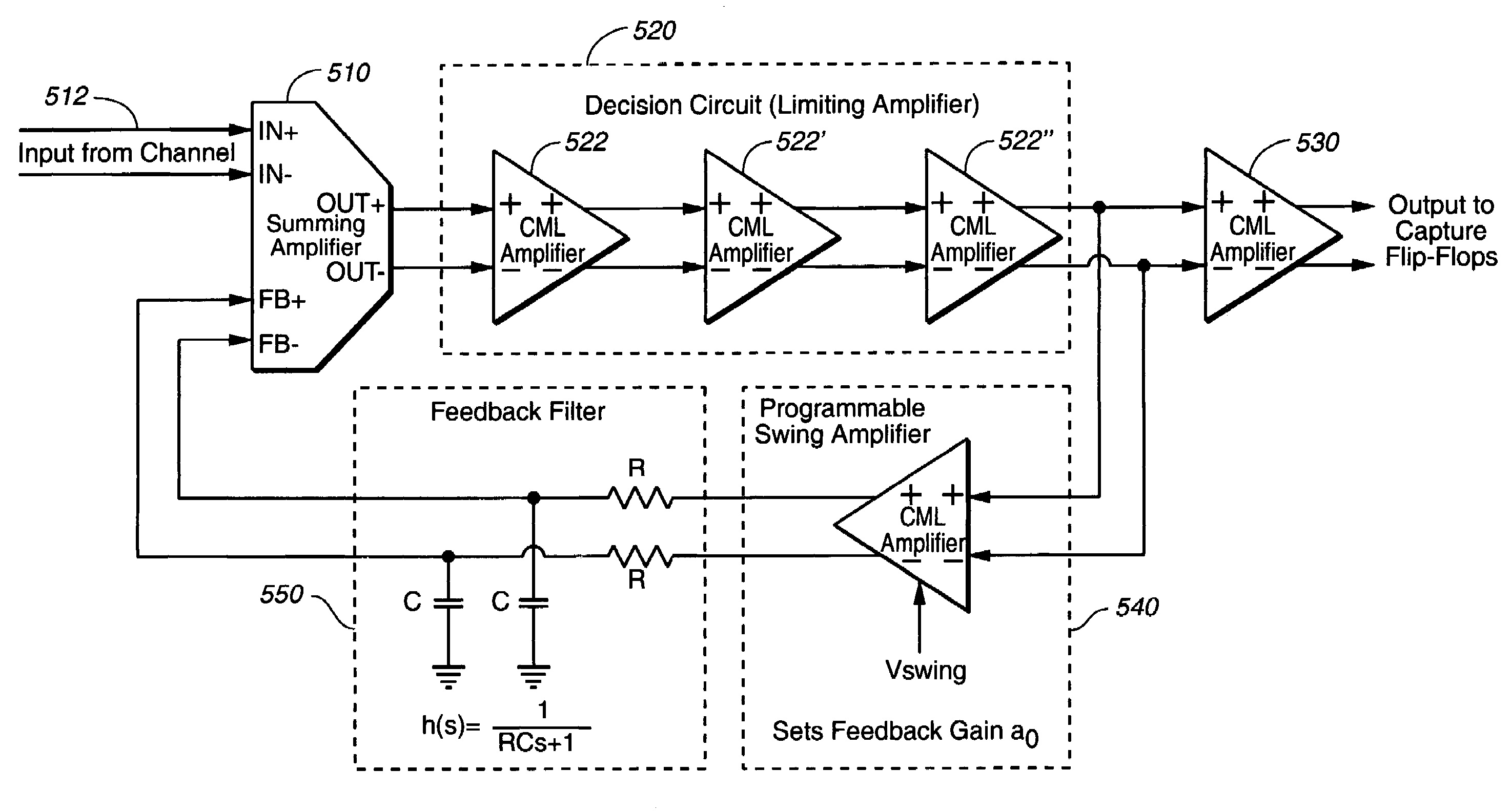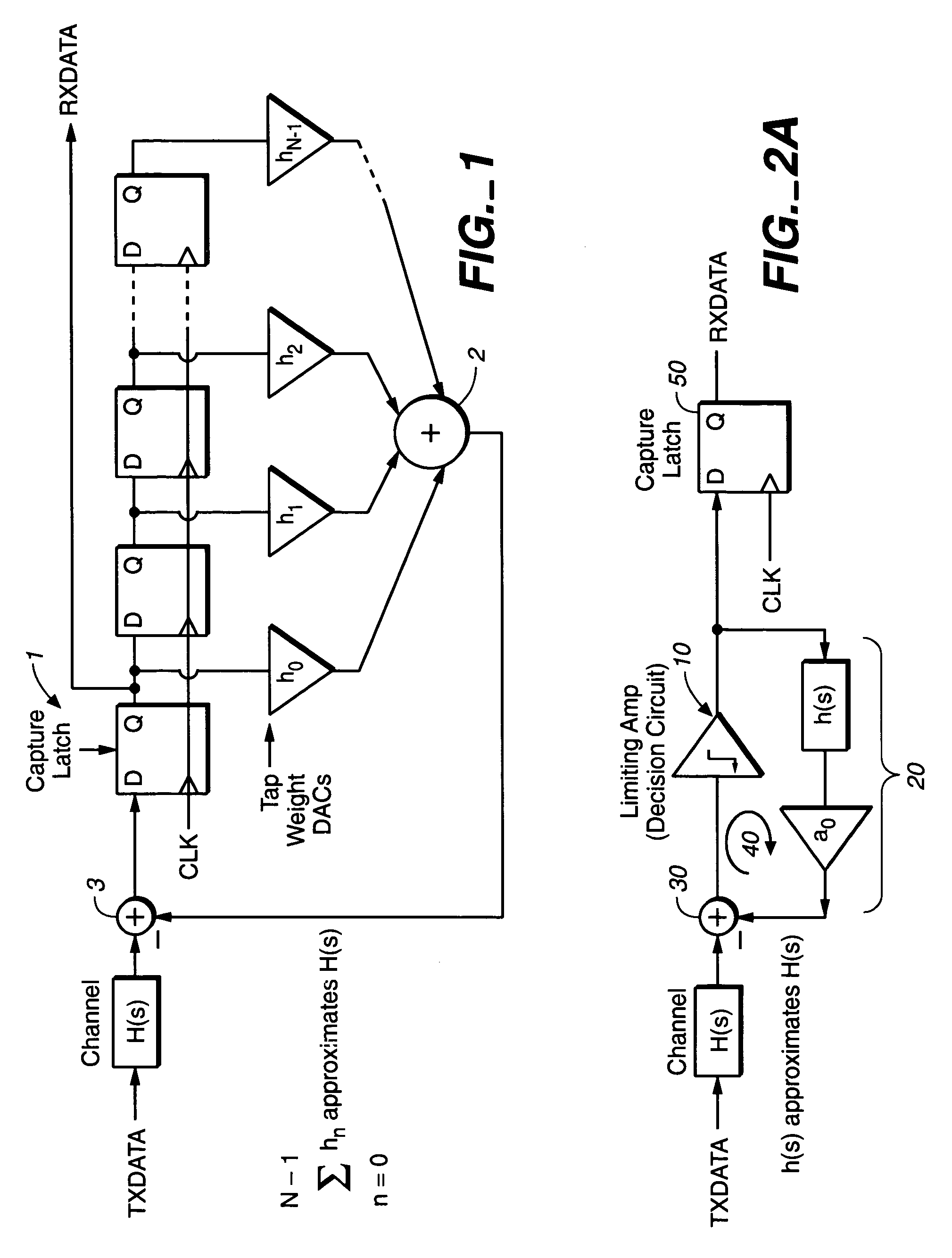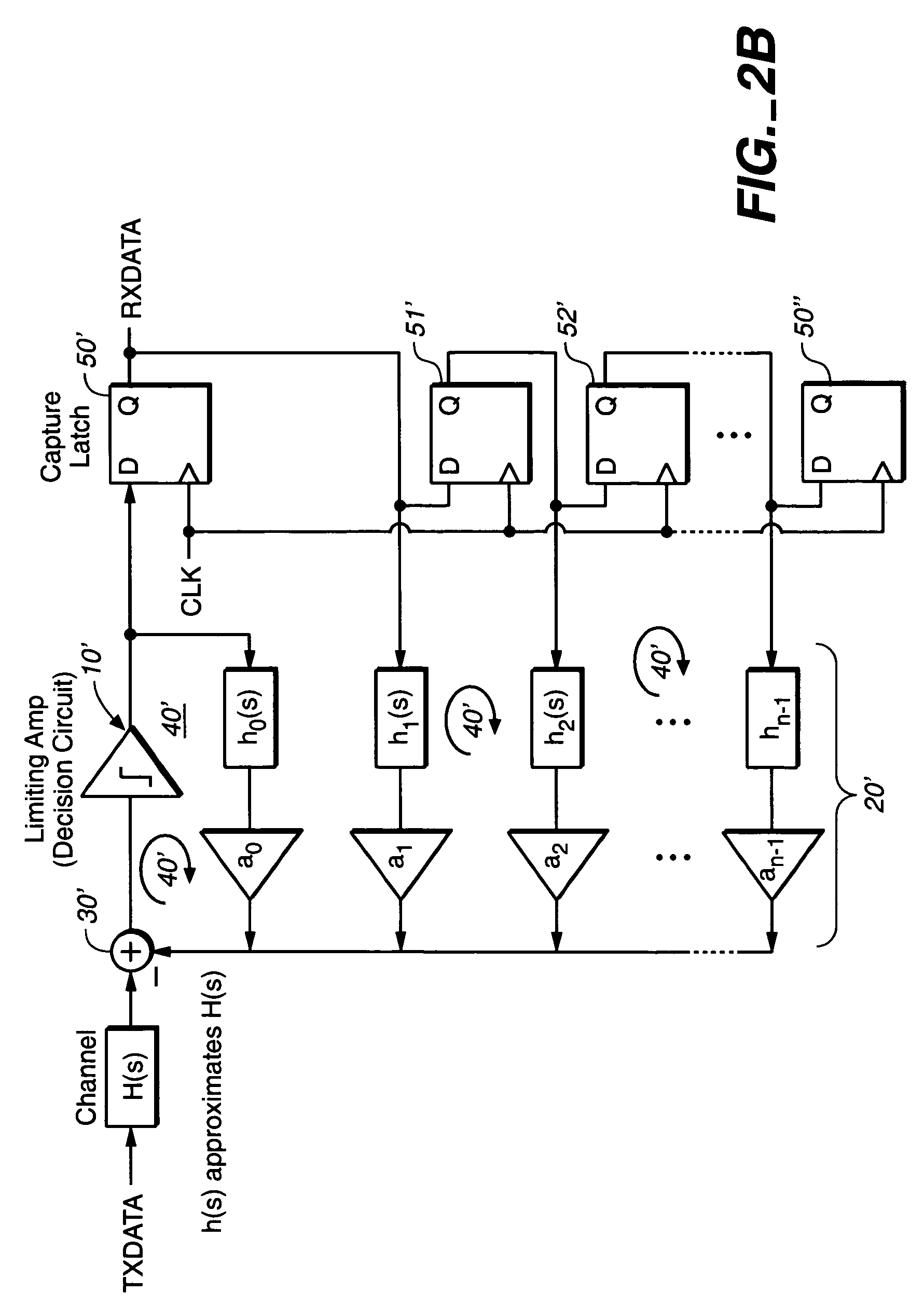Continuous-time decision feedback equalizer
a feedback equalizer and continuous-time decision technology, applied in the field of digital filters, can solve the problems of poor signal-to-noise ratio (snr), poor reception signal level, and higher levels of crosstalk, so as to reduce temperamental interaction, simplify circuitry, and reduce cost. the effect of circuit power consumption and area
- Summary
- Abstract
- Description
- Claims
- Application Information
AI Technical Summary
Benefits of technology
Problems solved by technology
Method used
Image
Examples
Embodiment Construction
[0036]In all the preferred embodiments taught in the present invention, the DFE (Decision Feedback Equalizer) of the present invention operates a feedback loop that is in the continuous time domain, employing continuous-time active filters, and not employing discrete-time domain filters, such as digital FIR (Finite Impulse Response) filters or digital IRR (Infinite Impulse Response) filters. Because the filters in the DFE of the present invention operate in the continuous time domain and the DFE employs active filters (e.g., filters using transistors and amplifiers, such as op-amps), some of the problems associated with the FIG. 1 embodiment, such as synchronizing the clock domains between the equalizer and the capture flip-flop clocks are avoided. Other advantages of using active filters in the continuous time domain such as taught in the present invention, over a discrete time filter DFE scheme such as shown in FIG. 1, include: the elimination of potential aliasing problems, filte...
PUM
 Login to View More
Login to View More Abstract
Description
Claims
Application Information
 Login to View More
Login to View More - R&D
- Intellectual Property
- Life Sciences
- Materials
- Tech Scout
- Unparalleled Data Quality
- Higher Quality Content
- 60% Fewer Hallucinations
Browse by: Latest US Patents, China's latest patents, Technical Efficacy Thesaurus, Application Domain, Technology Topic, Popular Technical Reports.
© 2025 PatSnap. All rights reserved.Legal|Privacy policy|Modern Slavery Act Transparency Statement|Sitemap|About US| Contact US: help@patsnap.com



